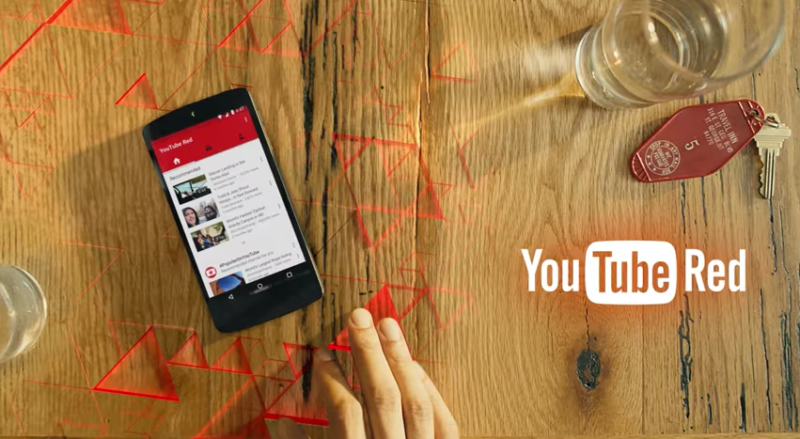
The launch of YouTube Red last year wasn't an immediate "take my money" moment for me. YouTube's first subscription service (it costs $10 per month) offers a few features that improve the viewing experience. But it also banks on a subscriber accepting new things, particularly new YouTube-y things. I eventually signed up. After a few weeks of use, I couldn't imagine a YouTube experience without Red.
But after six months, I cancelled my subscription—and I found that going back to the old, ad-filled YouTube wasn't that much of a shock.
What you get with Red
First, let's take a look at the features of YouTube Red.
Arguably Red's biggest feature is the ad-free experience. Subscribers don't see any advertisements before or during videos, and they aren't subjected to banner, search, or video-overlay ads. This is a huge perk for people like me who watch more YouTube than TV, as well as for those who simply detest online ads.
Another big feature is the ability to play a video's audio in the background when you're not actively watching it on a mobile device. The audio-without-video feature lets you use the YouTube app on your smartphone to listen to a video while simultaneously using other apps. This also feeds into the uninterrupted music feature, which lets subscribers listen to ad-free music via music videos in the YouTube app. As a bonus, Red subscribers get a subscription to Google Music, the company's main music streaming service. A single Google Music account costs $10 per month, so you're essentially getting both services for the price of one.
The final two Red features are offline viewing and Red Originals. Offline viewing is simple: save any YouTube videos to your account to watch at a later time, with no need for an Internet connection. Those videos remain in your offline videos folder for 30 days before they are removed. Red Originals are shows and movies YouTube creates in collaboration with many of its top talents.
A mixed bag
Some of those features turned out to be more useful than others. For some people, an ad-free experience alone might justify that $10 price. But it was more of convenience than a necessity for me. I don't use ad blockers in general and don't feel attacked by most video advertisements. The only ads I truly hate are those that prevent you from scrolling properly on a page or block online content (particularly written articles) for a certain amount of time. YouTube has pre-roll ads that play before a video begins, but the company announced recently that it will get rid of unskippable 30-second ads by 2018. That's a change that most YouTube viewers will enjoy, and you don't need a Red subscription to get that benefit.
I also appreciate that YouTube's ads are never a surprise. Most of the time, you get a five- to 30-second ad before a video begins; half of the time you can skip it. If you're watching a 10-minute or longer video, you might get an ad that interrupts the video at some point. However, you know when these ads are coming because a small yellow dash appears on the timeline of the video—just hover over the video player and you can see exactly when those ads will pop up. The ads are the online equivalent of a TV commercial. But if you're watching on a browser, YouTube doesn't pause the video if you leave that tab when an ad plays. (Some other network video players almost force you to watch the advertisement by pausing if you navigate away from their browser tab.)
Background audio and offline viewing were my two favorite features of YouTube Red. Playing a video's audio on my smartphone while I jumped between other apps not only let me multitask; it also let me treat YouTube videos like podcasts. I watch a variety of videos, including show episodes that can range from 15 minutes to a couple of hours. Any video that's longer than 15 minutes is perfect to listen to if you need to use your smartphone for something else. For instance, I got lost in a recent episode of the Joe Rogan Experience featuring one of my favorite YouTubers, Philip DeFranco. The episode was two hours long—when I had YouTube Red, I could have used my smartphone to research some DIY projects I'd been working on or check e-mail while listening to the two of them talk, podcast style.
While I only used the offline viewing feature a couple of times, other subscribers might really benefit from it. I saved a few videos to my account while traveling so I could entertain myself in Internet-neglected areas of an airport and during my flights when I didn't pay for Wi-Fi. If you travel a lot, or use underground public transit on your commute, offline viewing could be your best friend.
reader comments
150